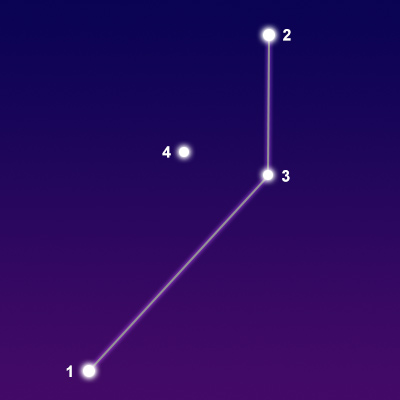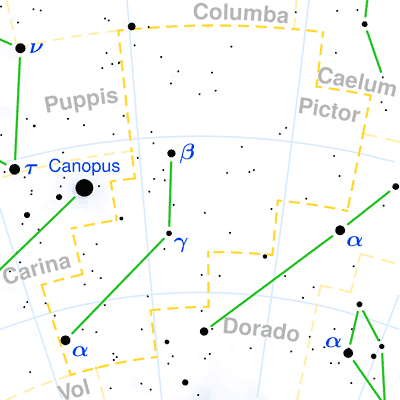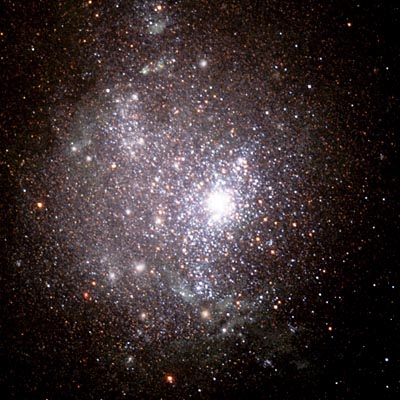Pronunciation:
(PIK-ter)Abbreviation:
PicGenitive:
PictorisRight Ascension:
6 hoursDeclination:
-55 degreesArea in Square Degrees:
247Crosses Meridian:
9 PM, January 20Visible Between Latitudes:
25 and -90 degreesThe constellation Pictor, the painter's easel, is located in the southern hemisphere of the sky. It is completely visible in latitudes south of 26 degrees north from November through January. It is best seen at northern latitudes in February. It is a small constellation covering an area of 247 square degrees. It ranks 59th in size among the 88 constellations in the night sky. It is bordered by Columba to the north, Puppis and Carina to the east, Caelum to the northwest, Dorado to the southwest and Volans to the south.
Pictor is not associated with any mythology. It is one of 14 southern constellations named by Abbé Nicolas Louis de Lacaille during his trip to the Cape of Good Hope in southern Africa. Its name means “painter” in Latin, but it was actually named for a painter’s easel. Lacaille originally named the constellation "Le Chevalet et la Palette" in 1756, which means "The Painter's Easel and Palette". Its shape resembles that of a painting easel. He changed the name to Equuleus Pictoris on his planishpere in 1763. The name was later shortened to Pictor by the English astronomer Francis Baily based on a suggestion by John Herschel.

points of interest below © Sea and Sky

© Torsten Bronger CC BY-SA 3.0
Beta Pictoris
Gamma Pictoris
Delta Pictoris
N/A
N/A
N/A
White Dwarf Star
Orange Giant Star
Blue-White Giant Star
3.86
4.50
4.81
Pictor is composed of very dim stars. The brightest star in the constellation is Alpha Pictoris with a visual magnitude of only 3.24. It is a white dwarf star located about 97 light years from Earth. It is a rapidly rotating star that may have ejected mass from its outer atmosphere. The second brightest star is Beta Pictoris with a magnitude of 3.86. It is also a white dwarf star that lies approximately 63 light years away. The third brightest star is Gamma Pictoris with a magnitude of only 4.50. It is an orange giant star located 174 light years from our solar system.
Pictor contains no Messier objects and very few deep-sky objects. NGC 1705 is an irregular dwarf galaxy located about 17 million light years from Earth. It is one of the most active star forming galaxies in our corner of the universe. Pictor A is a double-lobed radio galaxy with a supermassive black hole at its center. The black hole shoots a jet of plasma over 800,000 light years out into space. SPT-CL J0546-5345 is a massive galaxy cluster located approximately seven billion light years away. It is one of the most massive galaxy clusters yet discovered and contains hundreds of individual galaxies. These objects are extremely dim an can only be seen with large telescopes.

the Hubble Space Telescope



